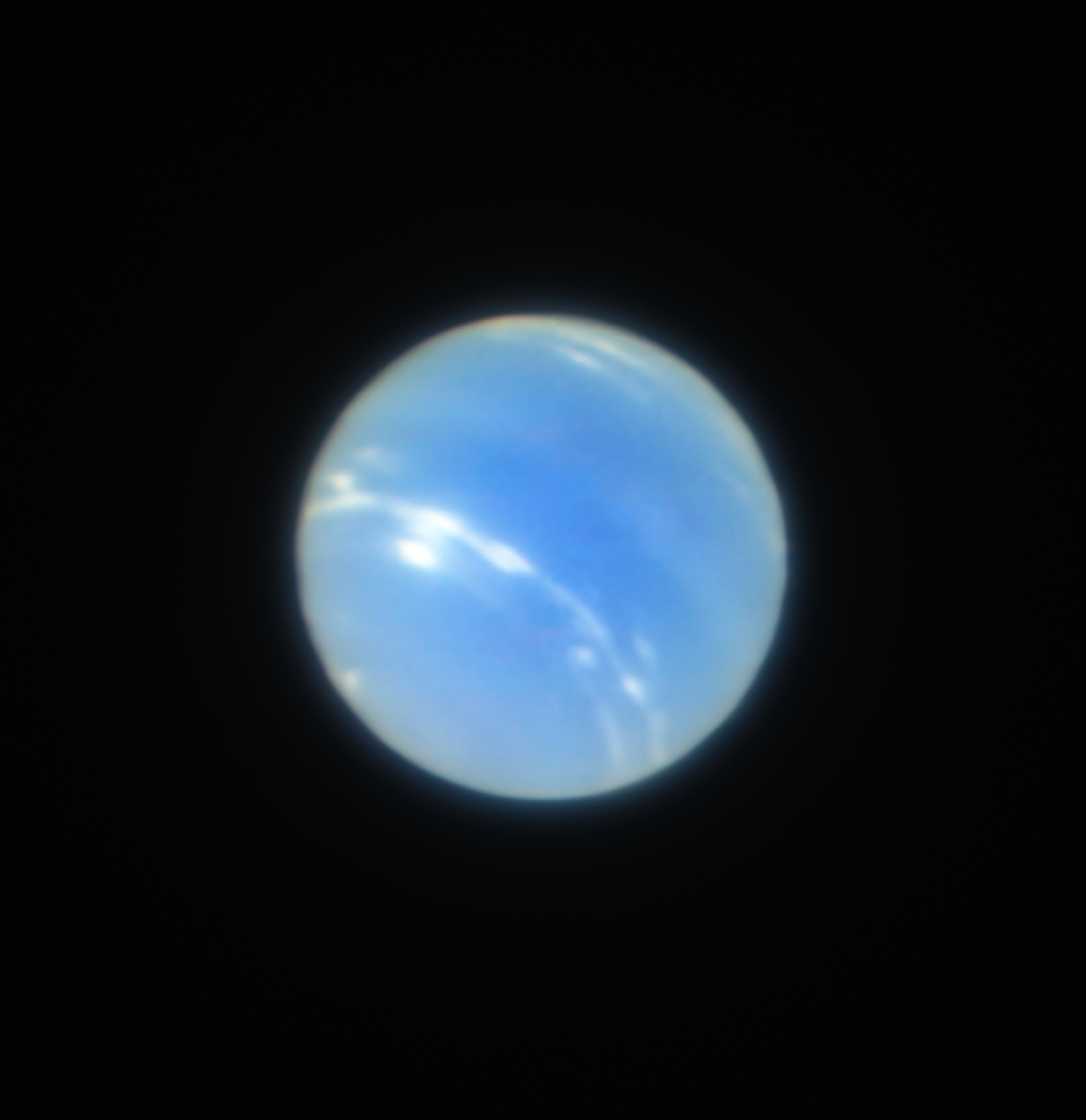Neptune from the Very Large Telescope (VLT)

| Credit | ESO/P. Weilbacher (AIP) |
|---|---|
| Language |
|
This image of the planet Neptune was obtained during the testing of the Narrow-Field adaptive optics mode of the MUSE/GALACSI instrument on ESO’s Very Large Telescope.
A new adaptive optics mode called laser tomography makes extremely sharp images of distant objects possible.
Adaptive optics is a technique to compensate for the blurring effect of the Earth’s atmosphere, also known as astronomical seeing, which is a big problem faced by all ground-based telescopes. The same turbulence in the atmosphere that causes stars to twinkle to the naked eye results in blurred images of the Universe for large telescopes. Light from stars and galaxies becomes distorted as it passes through our atmosphere, and astronomers must use clever technology to improve image quality artificially.
To achieve this four brilliant lasers are fixed to the telescope that project columns of intense orange light 30 centimetres in diameter into the sky, stimulating sodium atoms high in the atmosphere and creating artificial Laser Guide Stars. Adaptive optics systems use the light from these “stars” to determine the turbulence in the atmosphere and calculate corrections one thousand times per second, commanding the thin, deformable secondary mirror of of the telescope to constantly alter its shape, correcting for the distorted light.
